Kaj Halberg - writer & photographer
Travels ‐ Landscapes ‐ Wildlife ‐ People
Mosses
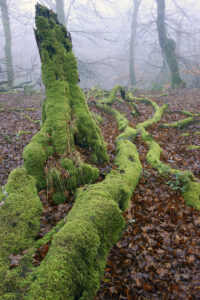
Moss-covered tree trunks, Velling Skov, Jutland, Denmark. (Photo copyright © by Kaj Halberg)
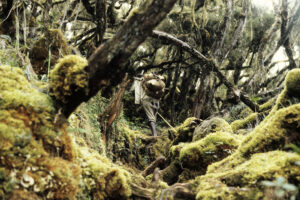
Moss-covered trail in a forest of a species of heather, Erica kingaensis, in which the branches are draped with old-man’s-beard lichens (Usnea sp.), Ruwenzori National Park, Zaire. (Photo copyright © by Kaj Halberg)
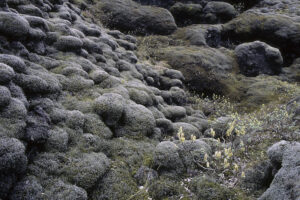
Lava boulders, covered in cushions of the moss species Racomitrium lanuginosum, Brunahraun, southern Iceland. Woolly willow (Salix lanata) is also present. In Icelandic, hraun means ‘lava’. (Photo copyright © by Kaj Halberg)
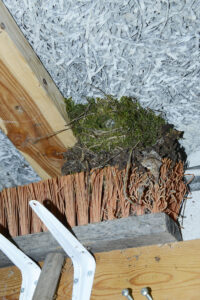
This nest of winter wren (Troglodytes troglodytes), which mainly consists of moss, has been built on an upside-down broom, eastern Jutland, Denmark. (Photo copyright © by Kaj Halberg)
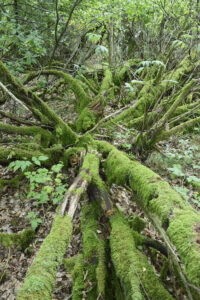
An old overturned juniper (Juniperus communis), overgrown by mosses, Salten Langsø, Jutland, Denmark. (Photo copyright © by Kaj Halberg)
Gludsted Plantage, central Jutland, Denmark, was established between 1877 and 1900. Today, many parts of the plantation are so old that the forest floor and overturned trees are completely covered by large moss cushions. Many pictures from this plantation are shown below.
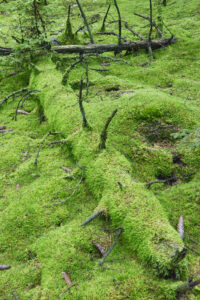
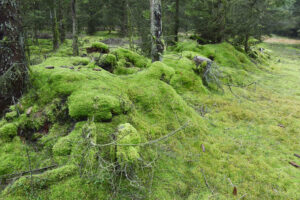
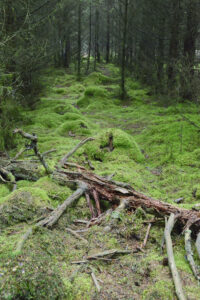
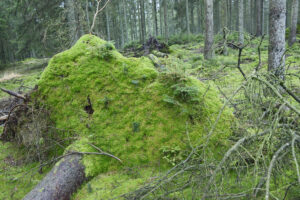
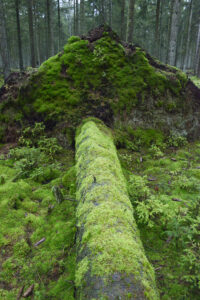
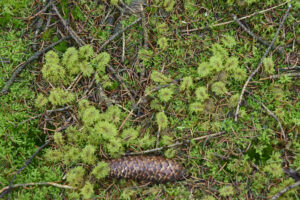
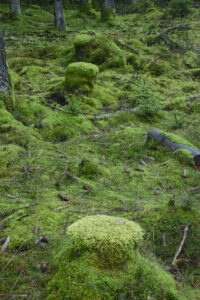
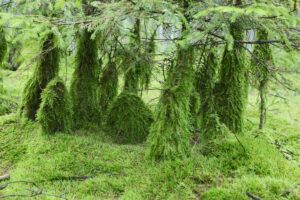
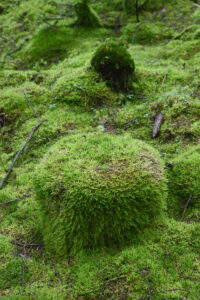
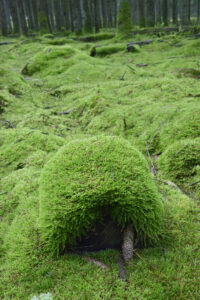
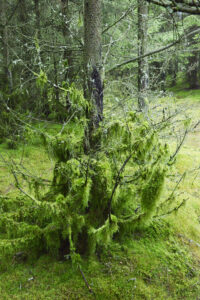
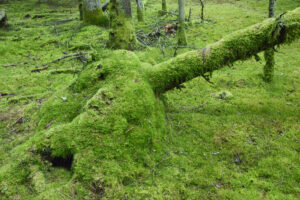
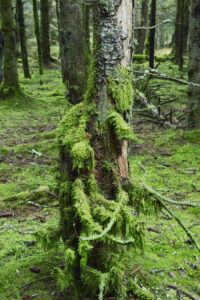
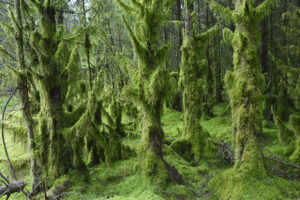
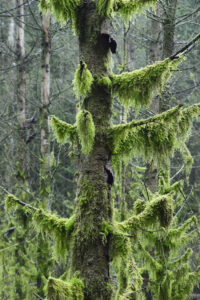
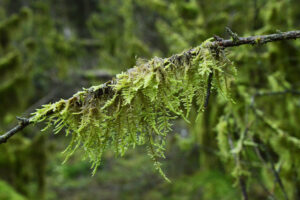

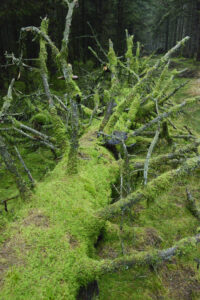

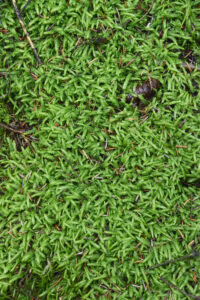
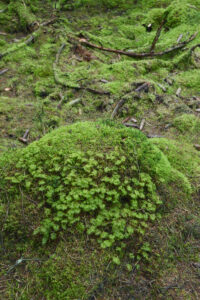
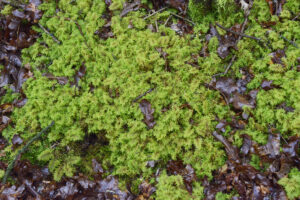
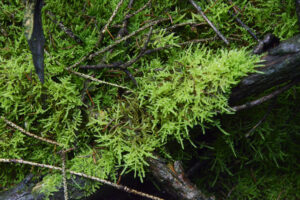
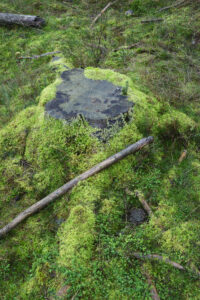
(Photos copyright © by Kaj Halberg)
Common haircap moss (Polytrichum commune) is a common species that is partial to wet areas, including marshes, humid heathland, and along forest streams. It is mostly below 10 cm tall, but may often reach 30 cm, and under exceptional conditions even 70 cm. It is widely distributed in the Northern Hemisphere, and is also found on several Pacific Islands, and in Australia, New Zealand, and Mexico.
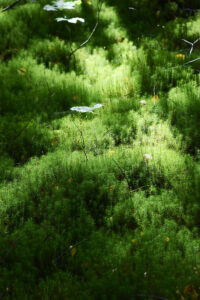
Large cushions of common haircap moss, Lyngsø, Silkeborg, Denmark. (Photo copyright © by Kaj Halberg)
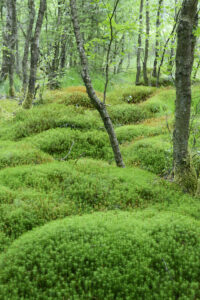
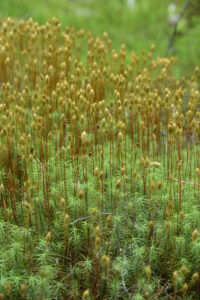
Wet marsh with birches (Betula) and common haircap moss, near Gjessø, Jutland, Denmark. (Photos copyright © by Kaj Halberg)
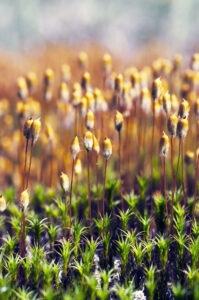

Common haircap moss with sporangies, Almindingen, Bornholm (top), and Fanø, both in Denmark. (Photos copyright © by Kaj Halberg)
Racomitrium lanuginosum is very widely distributed in arctic and subarctic areas in the Northern Hemisphere, in montane areas spread around the globe, and on many islands in the Atlantic and Pacific Oceans. It mainly grows on acidic boulders, but may also be found in in tundra or marshes.
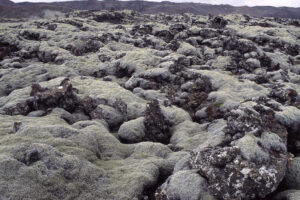
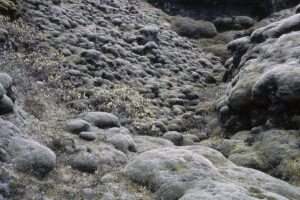
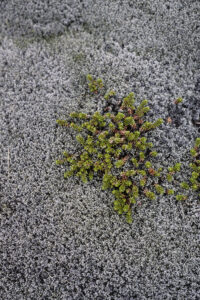
Lava boulders, covered in cushions of Racomitrium lanuginosum, Ögmundarhraun (top), and Brunahraun, both in southern Iceland. Woolly willow (Salix lanata) is present in the centre picture, and crowberry (Empetrum nigrum) in the bottom picture. In Icelandic, hraun means ‘lava’. (Photos copyright © by Kaj Halberg)
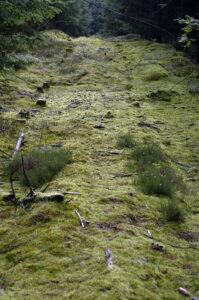
Moss-clad forest path, Rævsø, Jutland, Denmark. (Photo copyright © by Kaj Halberg)
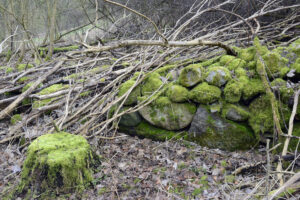
Stone fence, covered in moss cushions, Funen, Denmark. (Photo copyright © by Kaj Halberg)
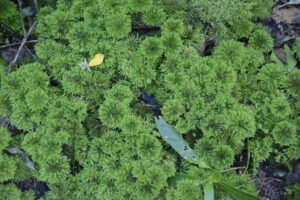
A species of umbrella moss (Hypopterygium), Lake Tikitapu, New Zealand. (Photo copyright © by Kaj Halberg)
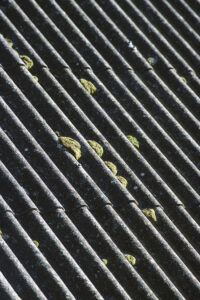
Moss, growing on a roof, Jutland, Denmark. (Photo copyright © by Kaj Halberg)

Stone fence, covered in moss cushions, Halltorps Hage, Öland, Sweden. (Photo copyright © by Kaj Halberg)
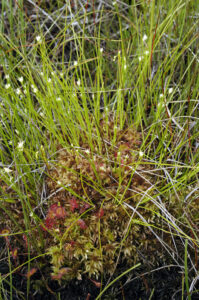
A species of bog moss (Sphagnum) with white beak-sedge (Rhynchospora alba) and round-leaved sundew (Drosera rotundifolia), central Jutland, Denmark. (Photo copyright © by Kaj Halberg)
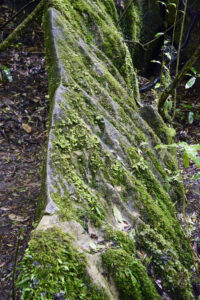
Rock with a species of umbrella moss (Hypopterygium), Mangapohue River Gorge, New Zealand. (Photo copyright © by Kaj Halberg)
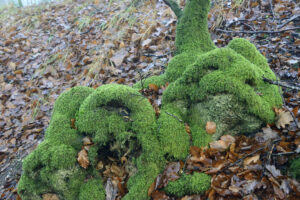
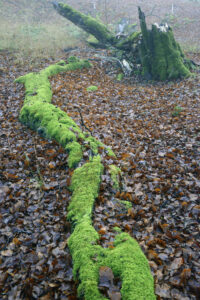
Moss-covered tree trunks, Velling Skov, Jutland, Denmark. (Photos copyright © by Kaj Halberg)
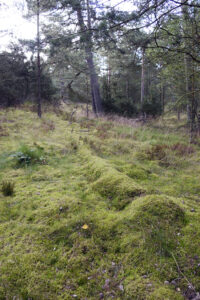
In a forest, growing on sand dunes in Hagestad Nature Reserve, Skåne, Sweden, this fallen trunk of Scots pine (Pinus sylvestris) has been overgrown by mosses and heather (Calluna vulgaris). (Photo copyright © by Kaj Halberg)
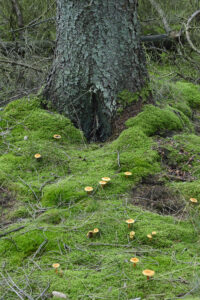
False chanterelle (Hygrophoropsis aurantiaca), growing among moss, Nørlund Plantation, Jutland, Denmark. (Photo copyright © by Kaj Halberg)
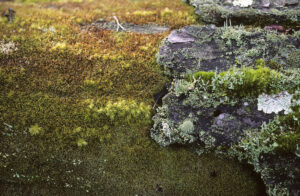
Rock, covered in mosses and lichens, Connetquot River State Park, Long Island, New York State. (Photo copyright © by Kaj Halberg)
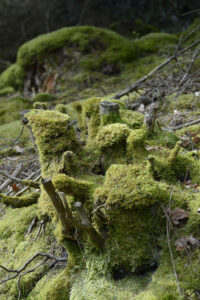
Spruce stump, covered in mosses, Ry, central Jutland, Denmark. (Photo copyright © by Kaj Halberg)
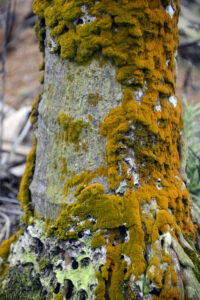
Trunk of a betel palm (Areca catechu) with moss cushions, Beishan, near Puli, Taiwan. (Photo copyright © by Kaj Halberg)
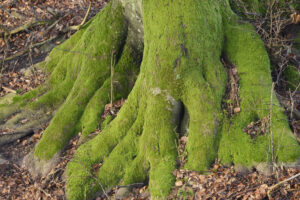
Trunk of an old beech (Fagus sylvatica), covered in mosses, Ry, central Jutland, Denmark. (Photo copyright © by Kaj Halberg)
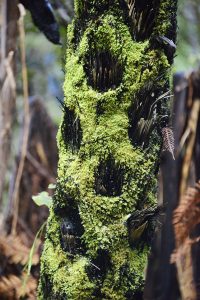
Moss, creating a pattern on the trunk of a tree fern, Trouson Kauri Park, New Zealand. (Photo copyright © by Kaj Halberg)

Roots of an old overturned juniper (Juniperus communis), overgrown by mosses, Bryrup Langsø, Jutland, Denmark. (Photo copyright © by Kaj Halberg)
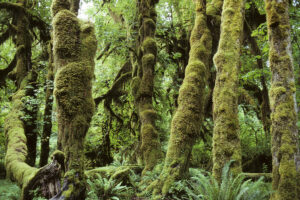
Moss-covered western hemlocks (Tsuga heterophylla), growing in a row on a fallen log, a so-called nursery log, Hoh Forest, Olympic National Park, Washington State. (Photo copyright © by Kaj Halberg)
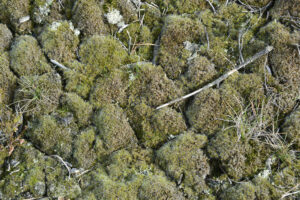
Moss cushions, cracked due to drought, Harrild Hede, central Jutland, Denmark. (Photo copyright © by Kaj Halberg)
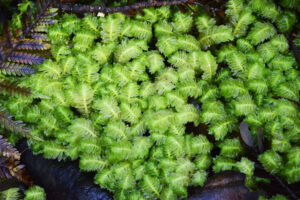
Moss, Waipoua Forest, New Zealand. (Photo copyright © by Kaj Halberg)
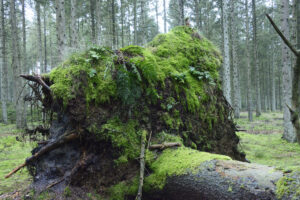
Roots of an overturned spruce with mosses and broad buckler fern (Dryopteris dilatata), Gludsted Plantation, central Jutland, Denmark. (Photo copyright © by Kaj Halberg)
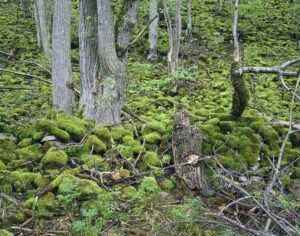
Stone fence, overgrown by mosses, Borgholm, Öland, Sweden. (Photo copyright © by Kaj Halberg)
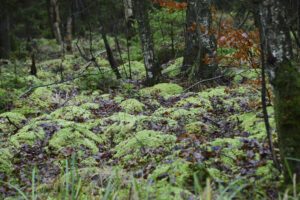
Moss-covered tussocks in a swamp, Borresø, central Jutland, Denmark. (Photo copyright © by Kaj Halberg)
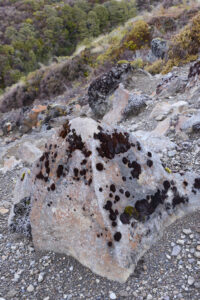
Dark moss on a rock, Tongariro National Park, New Zealand. (Photo copyright © by Kaj Halberg)
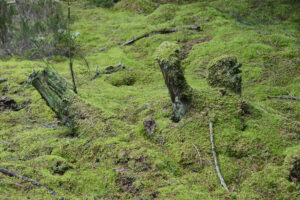
Moss-covered stump, Søby, central Jutland, Denmark. (Photo copyright © by Kaj Halberg)
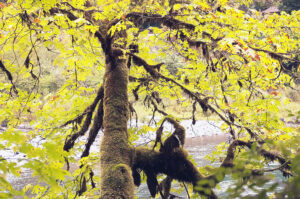
A large, moss-covered bigleaf maple (Acer macrophyllum) with autumn foliage, Umpqua National Forest, Oregon, United States. (Photo copyright © by Kaj Halberg)
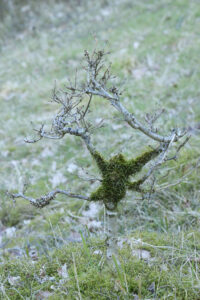
This moss, growing on a young common oak (Quercus robur), Palsgård Skov, central Jutland, Denmark, resembles a hairy gorilla. (Photo copyright © by Kaj Halberg)
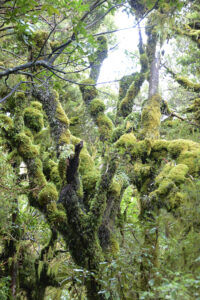
Moss-covered tree in a temperate rainforest, Dawson Falls, Mt. Taranaki, New Zealand. (Photo copyright © by Kaj Halberg)

Mosses and creeping willow (Salix repens), growing on a sand dune, Dueodde, Bornholm, Denmark. (Photo copyright © by Kaj Halberg)
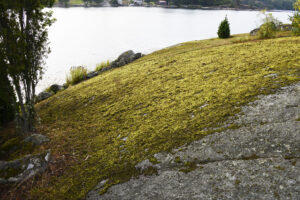
Moss-covered rock, Järnaviken, Blekinge, Sweden. (Photo copyright © by Kaj Halberg)

Moss-covered goat willow (Salix caprea), Store Hjøllund Plantation, central Jutland, Denmark. (Photo copyright © by Kaj Halberg)
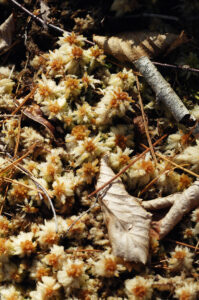
A species of bog moss (Sphagnum), Wells National Estuarine Reserve, Maine, United States. (Photo copyright © by Kaj Halberg)
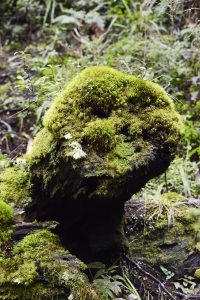
Moss-grown stump, resembling a snarling monster, Tongariro National Park, New Zealand. (Photo copyright © by Kaj Halberg)
Liverworts, which constitute about 9000 species in the division Marchantiophyta, are not mosses, but resemble them in a number of ways, for example by having green foliage, by being completely dependent on humid surroundings, and by multiplying by spores. Liverworts are found on almost the entire planet.
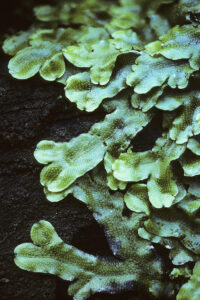
Scented liverwort (Conocephalum conicum), Læså, Bornholm, Denmark. (Photo copyright © by Kaj Halberg)
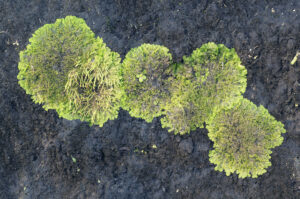
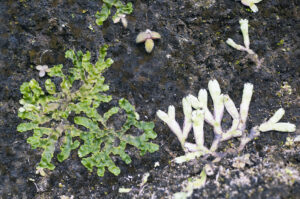
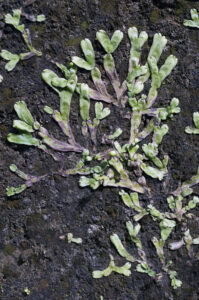
Liverworts, El Castillo, Cordillera de Tilarán, Costa Rica. (Photos copyright © by Kaj Halberg)

Liverwort, Tongariro National Park, New Zealand. (Photo copyright © by Kaj Halberg)
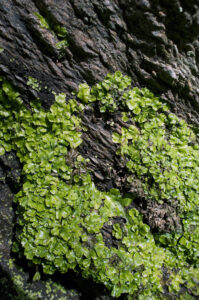
Liverwort on a rockface, Døndalen, Bornholm, Denmark. (Photo copyright © by Kaj Halberg)
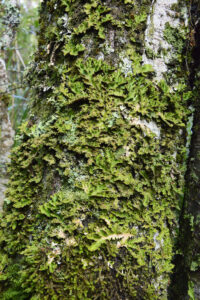
Liverwort, Jubilee Park, Ohakune, New Zealand. (Photo copyright © by Kaj Halberg)
(Uploaded February 2023)

